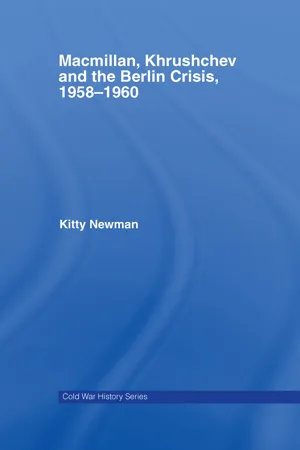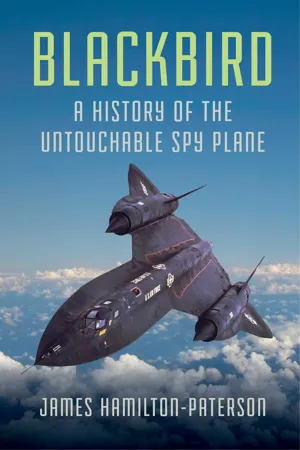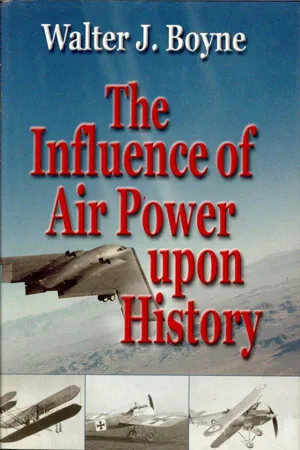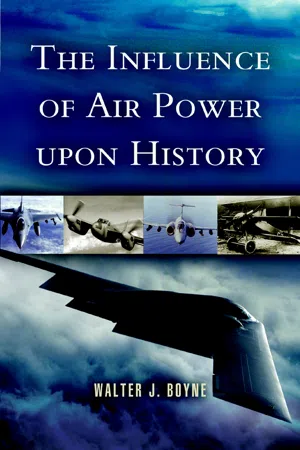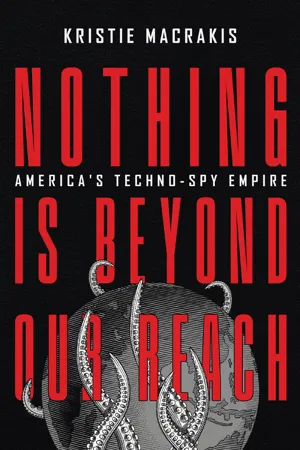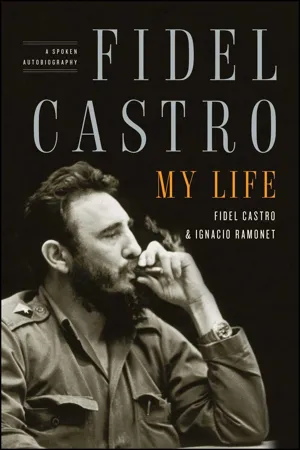History
U-2 Incident
The U-2 Incident was a diplomatic crisis between the United States and the Soviet Union in 1960. A U.S. spy plane was shot down over Soviet territory, and the pilot, Francis Gary Powers, was captured and put on trial. The incident heightened tensions between the two superpowers during the Cold War.
Written by Perlego with AI-assistance
Related key terms
Related key terms
1 of 4
Related key terms
1 of 3
9 Key excerpts on "U-2 Incident"
- Kitty Newman(Author)
- 2007(Publication Date)
- Routledge(Publisher)
8THE U-2 CRISIS, MAY 1960The story unfolds, 1–16 May 1960
On 1 May, the most important day in the Soviet calendar, and only two weeks before the Paris Summit, which was the first East–West meeting since 1955, the skies cleared and the U-2, postponed due to bad weather, finally took off. The US Government believed the surveillance was impregnable, as in the event of an accident the plane and pilot would automatically be blown up, and the pilot was in any case supplied with suicide pills. As it happened, Gary Powers’ desire for life was greater than his superiors bargained for. No comprehensive impartial investigation of the downing of the U-2 has ever taken place, but the semiofficial US enquiry verdict concluded that on 1 May, Gary Powers’ plane, which normally should have been travelling at 72,000 feet over Sverdlovsk, was downed by a Soviet SA-2 missile.1On the same day, in Moscow, Marshal Rodion Malinovsky, the Minister of Defence, addressing the Soviet armed forces, said ‘the people of the whole world are expecting from the coming summit meeting a just and urgent settlement on complete and general disarmament and a liquidation of the remnants of World War II’ (i.e. a German peace treaty), but he warned the West that ‘a smashing blow would be delivered to anyone attacking his country’.2The Eisenhower administration believed they were justified in despatching U-2s over the Soviet Union, because Russia had turned down Eisenhower’s Open Skies proposal at the 1955 Geneva Conference. These high-altitude flights by Lockheed aircraft began in 1956, as a result of the recommendations of a scientific panel headed by James Killian. Eisenhower had been under pressure from the Democratic Party, which claimed that he had allowed an ICBM missile gap to develop. This was long before Oleg Penkovsky passed information to Greville Wynne which enabled the CIA to inform the President that the Soviet Union had no operational ICBMs, and that by mid-1960 they would only have thirty-five.3 One of the key discoveries of CIA expert Ray Kline, who interpreted U-2 intelligence, was that ‘the military’s claim of Communism hell bent on world domination was not backed up by the evidence … there was no sign that the Communists were either ready or able to resort to direct military action’.4 Thus the President was able to resist pressure from the military for increases in defence expenditure, because the U-2 programme had shown first that there was no bomber gap, and later that there was no missile gap. However, as Paul Lashmar has shown, even when the U-2 flights proved that the Soviets were not building up to the extent that the Air Force claimed, General LeMay, Head of Strategic Air Command, and his colleagues waged a publicity campaign in the media working on fear of a surprise Soviet attack. Eisenhower was caught in a trap, unable to rebut the charge that he had neglected defence matters because he did not want to reveal to Congress and the public the existence of the U-2 programme, knowing that it was most provocative to the Russians.5- eBook - ePub
The Consequences of Humiliation
Anger and Status in World Politics
- Joslyn Trager Barnhart(Author)
- 2020(Publication Date)
- Cornell University Press(Publisher)
U-2 plane piloted by Gary Powers, an employee of the CIA charged with the photographic surveillance of intercontinental ballistic missile (ICBM) sites in central and northern Russia. Both Soviet and U.S. leaders agreed that this incident and the events surrounding it were ultimately responsible for scuttling the summit. Khrushchev personally told Eisenhower face to face as he was leaving the summit that if there had been no U-2 Incident, the Soviet delegation “would have come here in friendship and in the best possible atmosphere.” 12 Eisenhower shortly afterward told his aides that if the U-2 Incident had not occurred, the summit could have greatly improved U.S.-Soviet relations. The event had significant implications on Cold War relations for years to come. It is, therefore, important to understand how and why it altered Soviet policy. There is no doubt that Soviet leaders perceived Gary Powers’s flyover to be humiliating. The Americans had knowingly disregarded Russia’s international right to sovereign airspace in an act that was not only a flagrant violation of international law but also a “gross insult to the Soviet Union” that engendered significant outrage among Soviet leadership. But Powers’s was only one in a long line of CIA surveillance missions through Soviet airspace. Such flights had been ongoing, with the knowledge of the Soviets, on and off since 1946, but even more actively since 1952. Every time a violation of airspace would occur, some even penetrating Moscow’s airspace, the sense of impotence in the Soviet Union would grow. In response to the first few flyovers they learned of in the late 1940s, Soviet leaders had privately protested the U.S. policy - eBook - ePub
Blackbird
A History of the Untouchable Spy Plane
- James Hamilton-Paterson(Author)
- 2017(Publication Date)
- Pegasus Books(Publisher)
A U-2 had already made a successful and revealing excursion above East Germany and Poland when, in July 1956, Eisenhower gave his reluctant permission for ten more overflights. Almost immediately these yielded valuable information. Flying out of Wiesbaden, the pilots ventured as far east as Minsk, Kiev and the Crimea. When the rolls of film they brought back were developed, the interpreters could just make out midge-like MiG-15s and -17s falling away far below. This told them that the Dragon Ladies were safe for the moment from Russian interceptors, but not from the radars that had obviously detected them far enough away to vector in the jet fighters. Very soon the myth of the bomber gap had been debunked, much to the relief of the US Administration. This highly classified news must have come as a mixed blessing to a select few SAC generals like LeMay, for the myth had been a useful bargaining chip. However, its debunking could not be announced to the press without making it obvious that overflights must be taking place. Even though the Soviets knew this perfectly well and were complaining loudly, the American public was not allowed to know. That this was primarily a CIA project was a secret that had to be kept at all costs.The information the U-2s were bringing back was vital to the American military and the Pentagon clamoured for more overflights. These were soon being flown from Adana, Turkey, as well as from Germany. During the Suez Crisis in late 1956, the U-2s out of Turkey were deployed to see exactly what the British and French forces were up to, showing that they were just as useful for monitoring a war in real time as they were for taking pictures of static objects such as missile sites and airfields. Yet a new generation of Soviet jet fighters like the MiG-19 and MiG-21 was steadily becoming more of a threat and, towards the end of 1957, a MiG-19 actually fired its three 30mm cannon at a U-2, albeit ineffectually. Anything that could be done to avoid detection was tried. Ideally, the U-2s would reach an altitude of over 60,000 feet before crossing the Iron Curtain so as to avoid the betraying contrails they left lower down. The aircraft’s underside was also painted dark blue to make it less visible against the deeper blue of the stratosphere, but the penalty for this was the loss of 250 feet in altitude since every pound of paint cost a foot of height: a graphic illustration of the fine tolerances that governed flight at such rarefied levels.The Russians’ launch of the world’s first satellite, Sputnik, in October 1957 was devastating to American morale and a new panic, that of a missile gap, took hold. By now the US and the UK were sharing the interpretation of much of the data being brought back by the U-2s and early in 1958, in conditions of hermetic secrecy, a group of RAF pilots was recruited to fly U-2 missions. This was at a time when Eisenhower had placed one of his frequent embargoes on US overflights of Soviet territory. The British were trained in Nevada, one being killed when his aircraft apparently disintegrated at altitude, a probable victim of ‘Coffin Corner’. The following year the pilots were posted to the CIA’s ‘Detachment B’ at încirlik, Turkey, and in December the prime minister, Harold Macmillan, authorised two British overflights of the Soviet Union from there. The first went to Kapustin Yar, where the RAF Canberra had nearly come to grief six years earlier, but found no evidence of Inter-Continental Ballistic Missile testing.† - eBook - ePub
- Walter J. Boyne(Author)
- 2003(Publication Date)
- Pelican Publishing(Publisher)
The U-2 was a fragile aircraft, with a long, slender wing, narrow fuselage, and a bicycle-style landing gear. Weight considerations prevented installation of a pressurized cockpit, so the pilot was forced to wear an uncomfortable pressure suit through the long missions. The U-2 proved to be a dangerous aircraft to fly. It demanded extremely high piloting skills and was unforgiving of any error. There were many losses, and many pilots died in the U-2. All the while, NACA provided a cover story that the U-2 was making high-altitude research flights.The first U-2 spy flight took place on June 20, 1956, from Weisbaden, Germany, on a route that took it over Warsaw and Prague. Then on July 4, Leningrad and Moscow were overflown. The results were sensational—the photographs peered into the heart of Soviet defenses and industry.There had been some hopes that Soviet radar could not detect the high-flying U-2, but this was not the case, and the Soviet foreign ministry bitterly protested the invasion of its territory. The United States "stonewalled," denying that such flights were taking place, and ignoring the Soviet threats of military reprisals. The heart of the matter was that the Soviets were unwilling to admit that they could not stop the flights after the hundreds of billions of rubles they had spent on their air defense system.In the next four years, the U-2s made forty overflights as well as many flights around the periphery of the country. On one of these flights, a pilot noted a previously undisclosed railroad spur; he elected to follow it, and found the supersecret Baikonur Cosmodrome—a bit of sleuthing that the later satellites could not do. Sensors were soon added to the U-2 to bring back invaluable electronic information.The information bonanza the U-2s brought back revealed not only that the Soviet bomber fleet was far less numerous than believed, but that the Soviet ICBM development, while serious and advanced in some areas, was in general not as far along as feared.The U-2 overflights ended on May 1, 1960, when Francis Gary Powers was shot down near Sverdlovsk by the blast effect of a volley of fourteen SA-2 surface-to-air missiles. Khrushchev used the incident to mortify President Eisenhower at a Paris summit meeting.Powers was given a Soviet show trial and sentenced to ten years in a labor camp for espionage. He was later exchanged for the notorious Soviet spy, Rudolph Abel. - eBook - ePub
Crash Course
From the Good War to the Forever War
- H. Bruce Franklin(Author)
- 2018(Publication Date)
- Rutgers University Press(Publisher)
The alleged NASA press release claimed that one of its U-2s had disappeared while researching weather over Turkey, that its civilian pilot had evidently passed out after reporting a problem with his oxygen system, and that the plane might have then flown on autopilot into Soviet territory. A spokesman emphasized that the plane was clearly marked “with the letters N.A.S.A. in black on a gold-yellow band and with an N.A.S.A. seal, a globe inside calipers.” 6 Another CIA U-2 was hastily repainted to match this description and shown to reporters, who were then informed that NASA’s entire fleet of U-2s had been grounded to repair possible defects in the oxygen system. The New York Times obediently published a map showing the plane’s planned route inside Turkey, with a cross indicating where the plane presumably crashed inside the USSR, barely across the Turkish border. 7 The Soviets responded by producing pictures of the wreckage of the unmarked U-2 more than twelve hundred miles into its territory, rolls of films that the plane had taken of top-secret Soviet installations, and the pilot, Francis Gary Powers, a former U.S. Air Force captain and presently a GS-12 CIA operative. Soviet premier Nikita Khrushchev initially interpreted the intrusion as an attempt by out-of-control U.S. agencies to wreck the summit scheduled to convene in two weeks, an interpretation bolstered by ambiguous statements from Washington officials. But soon President Eisenhower not only took responsibility for all the U-2 espionage flights but defended the necessity for them, causing the summit meeting to collapse on its first day. Two months to the day after the U-2 shootdown, a Soviet fighter shot down a SAC RB-47 over the Barents Sea inside or along the periphery of Soviet airspace—depending on which side you choose to believe - eBook - ePub
- Walter J. Boyne(Author)
- 2005(Publication Date)
- Pen & Sword Aviation(Publisher)
The U-2 was a fragile aircraft, with a long, slender wing, narrow fuselage, and a bicycle-style landing gear. Weight considerations prevented installation of a pressurized cockpit, so the pilot was forced to wear an uncomfortable pressure suit through the long missions. The U-2 proved to be a dangerous aircraft to fly. It demanded extremely high piloting skills and was unforgiving of any error. There were many losses, and many pilots died in the U-2. All the while, NACA provided a cover story that the U-2 was making high-altitude research flights.The first U-2 spy flight took place on June 20, 1956, from Weisbaden, Germany, on a route that took it over Warsaw and Prague. Then on July 4, Leningrad and Moscow were overflown. The results were sensational—the photographs peered into the heart of Soviet defenses and industry.There had been some hopes that Soviet radar could not detect the high-flying U-2, but this was not the case, and the Soviet foreign ministry bitterly protested the invasion of its territory. The United States “stonewalled,” denying that such flights were taking place, and ignoring the Soviet threats of military reprisals. The heart of the matter was that the Soviets were unwilling to admit that they could not stop the flights after the hundreds of billions of rubles they had spent on their air defense system.In the next four years, the U-2s made forty overflights as well as many flights around the periphery of the country. On one of these flights, a pilot noted a previously undisclosed railroad spur; he elected to follow it, and found the supersecret Baikonur Cosmodrome—a bit of sleuthing that the later satellites could not do. Sensors were soon added to the U-2 to bring back invaluable electronic information.The information bonanza the U-2s brought back revealed not only that the Soviet bomber fleet was far less numerous than believed, but that the Soviet ICBM development, while serious and advanced in some areas, was in general not as far along as feared.Powers was given a Soviet show trial and sentenced to ten years in a labor camp for espionage. He was later exchanged for the notorious Soviet spy, Rudolph Abel.The U-2 overflights ended on May 1, 1960, when Francis Gary Powers was shot down near Sverdlovsk by the blast effect of a volley of fourteen SA-2 surface-to-air missiles. Khrushchev used the incident to mortify President Eisenhower at a Paris summit meeting. - eBook - ePub
Presidential Campaigns
Documents Decoded
- Daniel M. Shea, Brian M. Harward(Authors)
- 2013(Publication Date)
- ABC-CLIO(Publisher)
Eisenhower, Nixon, and the U2 Spy Plane Incident
Telegram from the Embassy in the Soviet Union to the Department of State, Moscow, 7:00 p.m.
May 9, 1960INTRODUCTIONThe Central Intelligence Agency—s Operation grand slam was scheduled to begin in early May 1960 and coincided with the last year of the Dwight D. Eisenhower administration and the general election campaign of the incumbent vice president, Richard M. Nixon. It was to be the largest intelligence gathering overflight of the Soviet Union yet by U.S. spy planes. CIA pilot Francis Gary Powers flew at 66,000 feet into Soviet airspace on May Day to take pictures of key military sites within the Soviet Union. But because it was a holiday, almost all flights were grounded, so it was quite a simple task for Soviet antiaircraft batteries to track the invading U.S. overflight. It was shot down soon after its penetration into Soviet airspace. The U2 spy plane and its cameras and images survived the crash, as did Powers, who was captured by farmers and turned over to the Soviet military.U.S. officials all believed that the plane would simply disintegrate if it was shot down at such a high altitude; certainly there could be no hope for its pilot either. As a consequence of this assumption, the U.S. government released a statement identifying the plane as a NASA weather research flight. The government claimed that the plane was conducting routine operations in Turkey and that faulty oxygen equipment caused the flight to veer off course. As a cover for the story, the U.S. government grounded all weather flights for oxygen checks. The Eisenhower administration did not realize that the Soviet Union had the reconnaissance plane, its array of espionage equipment and photos, and its pilot.2771. At beginning of Czech reception today Khrushchev greeted me warmly, took me aside, and before I could make any remark said he was sure not only that I knew nothing about this overflight but that I was opposed to such operations. He said they could not help but suspect that someone had launched this operation with deliberate intent of spoiling summit meeting. He explained they had not protested overflights because on an occasion when they did do so we had blandly denied any knowledge of them. He expressed resentment at Department statement about incident, particularly suggestion that because they had closed areas and secrets this was justification for overflights. He said they had known of these activities for very long time and said to me and later repeated publicly that day after General Twining left Moscow where he had been courteously received as guest, one of these planes had been sent far into Soviet Union. He referred to Senator Mansfield—s remarks1 and said that in due course they would probably let us see pilot. He indicated they would produce their evidence at press conference including [garbled] Ambassadors tomorrow or next day. In this connection I referred to Litvinov agreement.2 - eBook - ePub
Nothing Is Beyond Our Reach
America's Techno-Spy Empire
- Kristie Macrakis(Author)
- 2023(Publication Date)
- Georgetown University Press(Publisher)
41 The CIA also frequently celebrates the success of the U-2 in operations. For example, the United States thought the Soviet Union had more missiles and bombers than the United States, a situation that came to be known as a missile or bomber gap. The U-2 spy plane is credited with determining that there was no missile or bomber gap.When I have asked students, friends, and colleagues in lectures how the United States discovered missiles on Cuba, the audience invariably answers through photography taken by aerial reconnaissance (some respondents say satellites; others say planes).42 Part of the reason for this popular perception is the iconic black-and-white aerial photographs of missiles in Cuba displayed on the briefing boards in President Kennedy’s Cabinet Room and the more extensive images viewed by millions at the Adlai Stevenson UN briefing, as mentioned in the preface. They continued to be shown in newspaper articles and documentaries. These images are stamped on Americans’ collective memory.There is no doubt that the images captured by U-2 spy planes provided the visual evidence for missiles in Cuba. Interestingly, while the highly classified aerial photographs were revealed publicly for the first time, it was actually an inadvertent release of intelligence capabilities at first. The US embassy in London released the photographs to the British. The Department of Defense took credit for the aerial photography and refused to admit it was a U-2 spy plane. After the mistaken release, government officials (except for the CIA) thought the photographs provided the evidence needed to convince the free world that an attack on Cuba was justified should the Kennedy administration decide to carry it out. That it was a U-2 spy plane was not included in the official release. Nor was the public made aware of the risk taken by human agents. The point is that the images became indelibly imprinted on the consciousness of many Americans and shaped their view of the way in which the US government found missiles on Cuba.43 - eBook - ePub
Fidel Castro: My Life
A Spoken Autobiography
- Ignacio Ramonet, Fidel Castro(Authors)
- 2008(Publication Date)
- Scribner(Publisher)
So they continued to send the U-2 spy planes, and they also started making low-altitude flights. We decided to fire on the American planes that had started making those low-level flights. You can’t detect flights at more or less treetop level—it makes it easy for there to be a surprise attack. We pointed this out to the Soviet military officers in charge there, we told them that the low-level flights shouldn’t be permitted. We had previously informed them that we were going to shoot them down. And we opened fire with anti-aircraft artillery.On 27 October, in Oriente province, a battery of SAM missiles operated by the Soviets fired on and brought down a U-2 spy plane. It was at that point that the moment of maximum tension occurred. The American officer Rudolph Anderson, the pilot of the U-2, was killed. That was the sign that combat had practically begun. At any time, another incident could have occurred, and could have led to all-out war. And let me repeat that in Cuba, the people were very calm.Did you think at any point that war was inevitable? Well, it was a very tense moment. And we ourselves thought that conflict was inevitable. And we were determined to take that risk. It never occurred to us to give in to the adversary’s threats. But the Soviets did give in.At that moment of maximum tension, the Soviets sent a proposal to the United States. And Khrushchev didn’t consult with us about it. They proposed to withdraw the missiles if the Americans would withdraw their Jupiter missiles from Turkey. Kennedy agreed to the compromise on 28 October. And the Soviets began to withdraw the SS-4s. That seemed to us absolutely the wrong decision. It occasioned great indignation.Did you have the impression that the agreement had been reached behind your back?We learned from news reports that the Soviets were making the proposal to withdraw the missiles. And it had never been discussed with us in any way! We weren’t opposed to a solution, because it was important to avoid a nuclear conflict. But Khrushchev should have told the Americans, ‘The Cubans must be included in the discussions.’ At that moment they lost their nerve, and they weren’t firm in their determination. Out of principle, they should have consulted with us.
Index pages curate the most relevant extracts from our library of academic textbooks. They’ve been created using an in-house natural language model (NLM), each adding context and meaning to key research topics.
Explore more topic indexes
Explore more topic indexes
1 of 6
Explore more topic indexes
1 of 4
